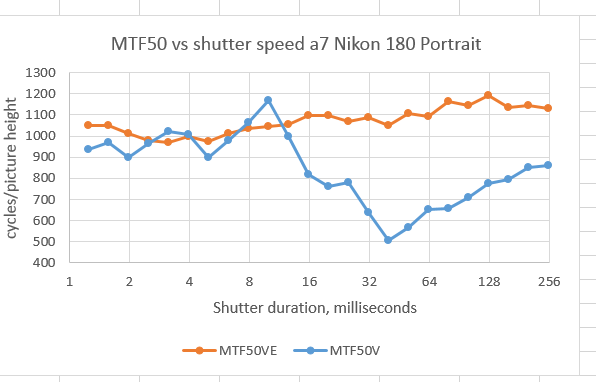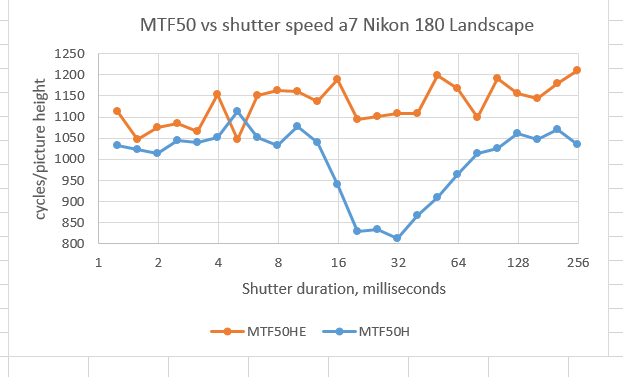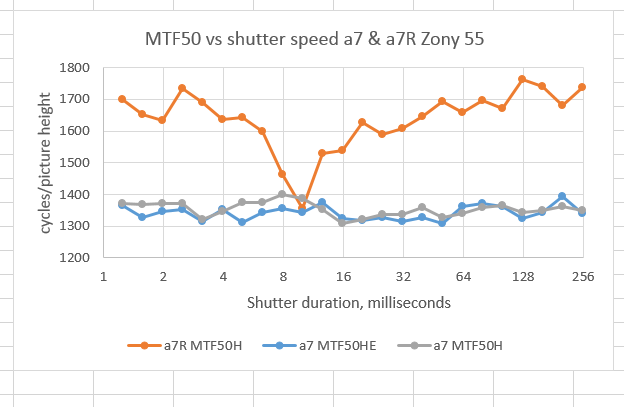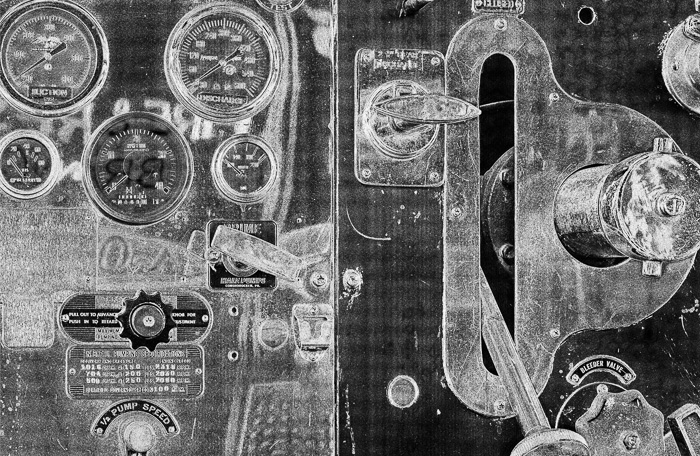I ran the same test as yesterday with the Nikon 180mm lens and the camera in portrait orientation. The orange line is with the electronic first curtain shutter, and the blue line is with the mechanical FCS: No surprises here; without EFCS the camera is more affected for vertical edges in portrait mode than… [Read More]
Sony a7 EFCS: how much difference does it make? Part 2
This is a continuation of the tests of the previous post to see how much the a7 suffers from shutter shock with and without the electronic first curtain shutter. Instead of the Zony 55, this time I used a Nikon AF Nikkor 180mm f2.8 ED. It’s an older lens, and not as sharp as some… [Read More]
Sony a7 EFCS: how much difference does it make?
A reader asked me to run some tests to see how much the a7 suffered from shutter shock with and without the electronic first curtain shutter. I was intrigued. I decided to start with what should be a pretty easy test, so I used a 55mm lens. Since I haven’t tested the a7R with this… [Read More]
A Photoshop oddity
There’s an old technique in chemical photography for making etching-like images. You sandwich a negative and a positive of the same image together just slightly out of register, and print the whole thing on lith film, then you make your print from the lith. I thought I’d see what happened to one of the firehouse… [Read More]
Stitching the firehouse pictures
While I was making the last series of firehouse exposures, it occurred to me that it might be interesting to combine the focus stacking with a pano. I didn’t have the right pano equipment, so I just used the vertical tilt on the Arca Swiss C1. The images stitched pretty well in Autopano Giga 3.0,… [Read More]
- « Previous Page
- 1
- …
- 406
- 407
- 408
- 409
- 410
- …
- 560
- Next Page »




